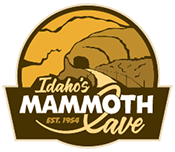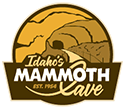Craters of the Moon National Monument is a vast 750,000-acre expanse that unfolds a geological storybook under the vast Idaho skies. This landscape, marked by the Great Rift—a 52-mile crack in the Earth’s crust—resembles a scene straight out of a sci-fi novel, with its extensive lava fields, deep fissures, and towering cinder cones. Established in 1975, this geologic wonderland invites explorers to traverse a terrain that’s both alien and mesmerizing, offering an unparalleled adventure for hikers, campers, and nature lovers.
A Volcanic Sea Frozen in Time
Strikingly preserved, the volcanic Craters of the Moon landscape was formed over the last 15,000 years. Today, it allows visitors to wander through its fields of lava that once flowed across the Snake River Plain. The eruptions resulting from the Great Rift created many features, from exposed fissures and lava tubes to sprawling lava fields and cinder cones, presenting a panorama eerily reminiscent of the lunar surface. This is where Earth’s fiery interior meets the surface, offering a rare glimpse into the dynamic processes that shape our planet.
Enduring Impressions
Craters of the Moon stands as a monument to the enduring and awe-inspiring forces of nature. Its landscape serves as a constant reminder of our planet’s vibrant geological activity, echoing the ancient eruptions that shaped this unique terrain. The monument’s dark skies, preserved wilderness, and diverse ecosystems invite us to reflect on our place in the natural world and our responsibility to protect these irreplaceable treasures.
Plan A Visit
Planning your visit to Craters of the Moon begins with a stop at the Visitor Center, open daily from 8 a.m. to 4:30 p.m., offering extended hours in the summer. The entrance fee is $15 per vehicle, providing access to the scenic 7-mile Loop Road and various trails that lead you through the monument’s volcanic wonders. For those interested in the backcountry, primitive roads accessible by high-clearance, 4-wheel-drive vehicles open up more of the monument’s rugged beauty for exploration. Remember, the area is remote, and conditions can be primitive, so preparation is key to a safe and enjoyable visit.
Exploring Craters of the Moon – Unique Things to Do in Idaho
Craters of the Moon National Monument and Preserve offers an otherworldly experience right here on Earth. With its lunar-like terrain, rich history of volcanic activity, and diverse habitats, the monument is a must-visit for anyone fascinated by the forces that shape our planet. Whether it’s exploring lava tubes, marveling at the vast lava fields from a scenic overlook, or simply enjoying the solitude of this stark landscape, Craters of the Moon provides a unique and unforgettable adventure.
Quick Facts About Craters of the Moon
- Craters of the Moon National Monument and Preserve spans a massive 750,000 acres, featuring the Great Rift, a 52-mile long crack in the Earth’s crust, offering a landscape filled with lava fields, fissures, and cinder cones reminiscent of lunar terrain.
- The area’s surreal landscape was formed by volcanic eruptions starting 15,000 years ago, with the most recent activity occurring just 2,100 years ago, making it a prime example of the dynamic volcanic processes that continue to shape our planet.
- From its lava fields and high desert climate, Craters of the Moon hosts a variety of ecosystems where plants and animals have adapted to thrive, underscoring the area’s rich biodiversity.
- Recognized in 2017 for its exceptional night sky preservation, Craters of the Moon offers unparalleled stargazing opportunities, allowing visitors to gaze upon the stars against the backdrop of its untouched wilderness.
- With a visitor center providing insights and the scenic 7-mile Loop Road offering easy access to the monument’s volcanic features, Craters of the Moon is equipped for explorers of all levels to experience its unique landscape, from hiking and camping to cross-country skiing in the winter.
- Established as a National Monument in 1924 and later expanded, Craters of the Moon stands as a testament to the awe-inspiring forces of nature, inviting reflection on our planet’s vibrant geological activity and the importance of preserving such irreplaceable natural treasures.
Idaho’s Mammoth Cave
Planning a trip to Idaho? Don’t forget to put Idaho’s Mammoth Cave at the top of your list. As one of the most unique things to do in Idaho, you can explore a unique and awe-inspiring underground landscape at your own personal pace with our self-guided tours. In addition to the cave, there are two privately owned museums of natural history on-site, the Shoshone Bird Museum and the Richard Arthur Olsen Museum featuring a wealth of exhibits that has earned them nickname “The Smithsonian of the Desert,” making it an unforgettable stop for the whole family.
Located eight miles north of Shoshone, Idaho, on Highway 75, Idaho’s Mammoth Cave will be open for seasonal tours from May – October, from 10 a.m. to 6 p.m., 7 days a week, including all major holidays. For more information, visit idahosmammothcave.com or call (208) 329-5382.








